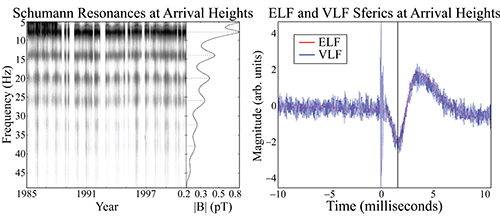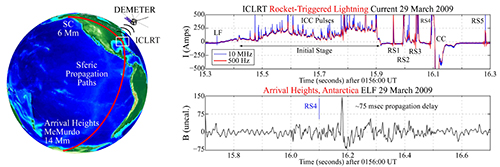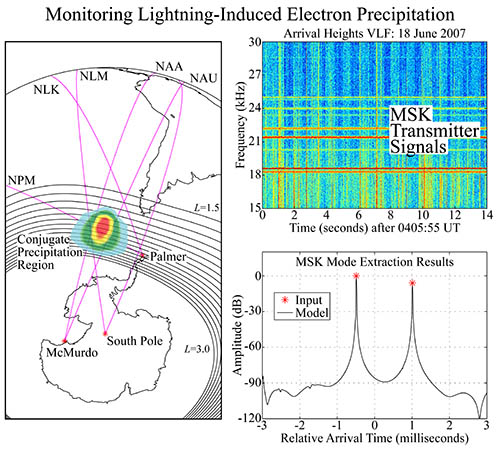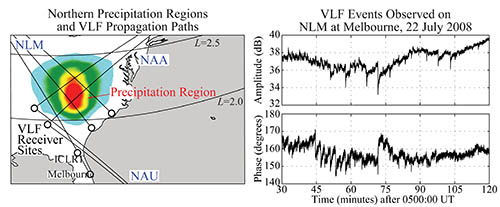Antarctic Research
Research Overview
A collaborative three-year effort quantitatively investigates lightning and lightning-induced electron precipitation (LEP) using ELF/VLF (~5 Hz to 32 kHz) observations on the Antarctic continent. This coordinated effort will fully characterize individual lightning strokes occurring in the northern hemisphere while simultaneously observing the associated ELF/VLF waveforms in the Antarctic. In addition to advancing the knowledge of ELF/VLF wave studies in general, these observations will be used to differentiate between lightning energy that couples to the ionosphere/magnetosphere and that which couples to the Earth-ionosphere waveguide. Simultaneous observations of LEP will be conducted in the northern and southern hemispheres in order (1) to quantitatively relate the upward-coupling lightning energy and LEP production and (2) to evaluate the conditions under which LEP occurs in both hemispheres. Rocket-triggered lightning experiments in Florida allow for the direct measurement of lightning currents and will contribute to both lightning- and LEP-related research efforts. The Antarctic research stations are ideally situated to perform both the long-distance ELF/VLF lightning observations and the VLF scattering observations for LEP detection (in the conjugate region) necessary for the success of this program.

This program provides logistical support to continue the decades-long ELF/VLF observations at Arrival Heights, Antarctica. The Arrival Heights data recording unit has been upgraded, and it now continuously monitors the ELF/VLF band without the need for DVD storage. Logistical support is also provided to supplement the ELF/VLF receivers at Palmer and South Pole Stations so that they can provide real-time data analysis pertinent to this program. The experimental effort in the northern hemisphere centers on lightning observed at and near the International Center for Lightning Research and Testing (ICLRT) in Camp Blanding, Florida. Simultaneous wideband (1 Hz to 20 MHz) observations of the causative lightning waveforms and narrowband VLF observations of LEP contribute to the program. Attempts to trigger lightning using the classical rocket-and-wire technique will be performed at the ICLRT during intense nighttime thunderstorms.



Field Reports

